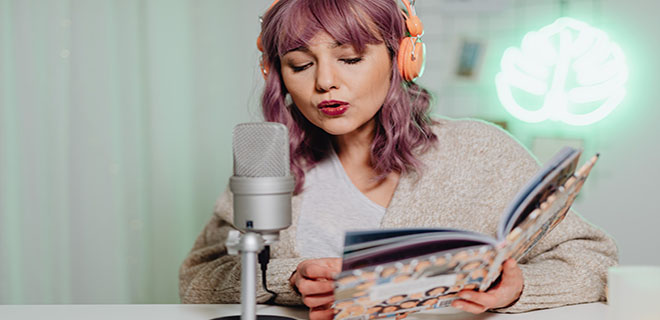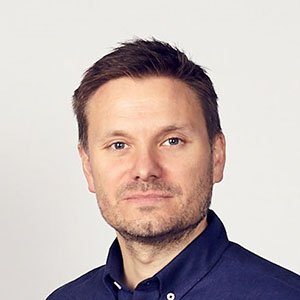
In the midst of rapid growing pains podcasting emerges as a thriving programmatic medium.
Sprouting from just a laptop and a little bit of code in 2015, AMA, previously known as A Million Ads, has grown into the leader in dynamic creative for digital audio advertising. And by using data to make each listener’s experience more contextually-aware and personalized, they create a more compelling experience for listeners and deliver better outcomes for advertisers.
Whether listening to podcasts on Spotify, iHeart, or Audacy, the ad experience can now be enhanced and personalized by AMA’s ability to dynamically serve the most relevant ad for each listener.
What does AMA mean by dynamic? Dynamic is the ability to change the voiceover, music, and sound effects of the audio ad based on data about each listener, such as the time of day the user is listening, the device they’re using, the weather, the pollen count, or any other data the creative ad platform can access in a privacy-compliant way.
“Our studio tool is a platform for scriptwriters, producers, and creatives to design and build these dynamic ads”, said Steven Dunlop, CEO and Founder of AMA. “We have a serving infrastructure that can serve dynamic ads into platforms like Spotify, iHeart, and Pandora, automating the process of serving the right message to the right user, all through a single tag.”
Yakira Young: Are selling ads on podcasts a struggle? What are the main challenges that publishers and advertisers face in the space? 
Steven Dunlop: The podcast industry is growing but not evenly. For podcast creators, if you’re a new podcast that no one knows about yet, it’s tough to get monetized because you don’t start to see any money coming in until you reach a critical mass or a scale that’s interesting, so it is a game of marketing and SEO to get known.
For advertisers, the biggest challenge with podcasts is effectively spending money on the channel. It’s tough for big advertisers with big budgets because the inventory is fragmented, and the format is difficult to scale.
These are symptoms of the first phase of podcast monetization, and we are approaching the tricky transition between the first phase of podcasts and monetization and the second phase.
Phase one:
The first phase was characterized by a few hit podcasts being sponsored by a similar type of advertiser, brands like Casper mattresses, Squarespace, Better Help, Hello Fresh, and other Direct -to -Consumer (D2C) businesses that are prepared to try different types of advertising.
Podcasters were often famous people who would turn to podcasts, often names you’d recognize or coming from prominent publications like NPR, BBC, and the Economist, places where listener trust and audiences would naturally migrate, and then the ad creative itself was host read.
The host would go from discussing a True Crime Murder in a sleepy suburb to telling you about Casper mattresses. That was the first phase of podcasting. Not a lot of ad tech or technology involved.
The podcast ecosystem has been built around that, gathering up a lot of the podcasters into groups so they can be managed and sold collectively. But then also applying ad tech to the scenario rather than the baked-in-host read ad.
Phase two:
The second phase is about being able to buy and sell programmatically, like all other forms of digital advertising. This does not include baking in content linked to that host or that podcast.
This allows more budget to be spent across many different podcasts. So rather than just Squarespace sponsoring five podcasts, Squarespace can buy based on the podcast’s audience, topic, or genre rather than just the title.
Say you have a discussion format podcast whose first topic is about science news, the second story is about sports results, and the third might be about politics. With topic-based programmatic ads, an advertiser could pick and choose where to place their ad based on the content of that segment, whether they want to buy just that sports segment, science, or all three.
YY: What does this mean for the creative?
SD: In this second phase, there’s an opportunity to build a new, more flexible creative format.
Imagine you’re a podcast network with 1,000 podcasts in your catalog. Getting all 1,000 hosts to read the script for one advertiser is already labor-intensive. But, more likely there are 100 different advertisers, so now you’ve got 100 times 1,000 different scripts to read, which is an incredible organization and logistical challenge.
So, the answer isn’t making everybody do a live read. The answer is finding a creative format that can fit in the middle, with some of the benefits of live reads, like the authenticity, but can scale to the kind of dimensions that the bigger podcast networks are working at.
YY: How important is it for an ad to relate to the content? I attended the IAB podcast upfront, and one takeaway is that listeners prefer when the ad flows into what’s already being discussed.
SD: When people think about programmatic advertising on podcasting, they immediately associate it with a particular type of creative; the 30-second ad is trying to sell air conditioning.
This makes people nervous in the podcast industry because we all hark back to radio, where there are 18 minutes of ads an hour, which doesn’t make for a great user experience in podcasting.
So there’s a strong and justified fear of a race to the bottom in the podcast industry. The lowest common denominator is that we all get programmatically delivered spots. I encourage everyone to see programmatic as a way of trading the creative, the payload that goes once you’ve won the bid in the programmatic auction. It can be host-read or the middle ground.
NPR has announcer voices for all of their commercial spots so that announcers could know it’s being placed in this podcast and therefore reference it. It feels like it’s native content.
Native content is prevalent on many websites, newspapers, and radio stations. In radio, they call it the live read, which is the presenter opening up the mic in the middle of their show and reading a script.
That concept is a huge opportunity for podcasting and solves the multidimensional 100 by 1000 logistical challenge. It gives the premium feel that a host- read ad would get but avoids the fear that everyone has of these lowest-common-denominator spot pods.
YY: What are the main differences between podcast advertising and other forms of digital advertising? How do you see these differences impact the buying and selling process?
SD: It’s about where podcasting has come from, which is that first phase. I was a radio producer in 2007 and worked on a breakfast show at a rock music radio station in Manchester. I made the breakfast show podcast, and we got about 100 weekly downloads. It was a complete labor of love.
And then we had a Serial effect if you remember the Serial podcast from This American Life. That first series brought podcasting onto the front pages and into everyone’s media consumption diet.
Back when I was making podcasts for radio stations, there was no advertising technology or a thought of monetization. It wasn’t until much later that podcast sponsors came along. Now it’s that transition from the first phase into the second phase that’s the main difference.
Display advertising has been around since 1996, and video advertising has been around for a long time. Now, with businesses like Google and Facebook pushing the envelope and all of the advertising technology built around display and video — those formats are further ahead than podcasting. Podcasting is playing catch-up, and it will get there because everyone is incentivized to bring more money into the industry. These creative challenges are just a growing pain. Ad tech is already there and working, there are lots of vendors who are already making podcasting an equivalent digital channel.
There are some issues around measurement. If you have a plan that includes TV, CTV, social, display, search, and podcast, sometimes it’s hard to compare metrics across all of those channels because other digital formats have better attribution metrics or click-through rates.
Podcasting is getting there, but it’s not quite that simple if you’re in an agency and trying to plan a cross-media campaign and want to check a box for podcasting. There are still growing pains in the planning and buying phases, from an agency perspective as podcasting is going through this transition.